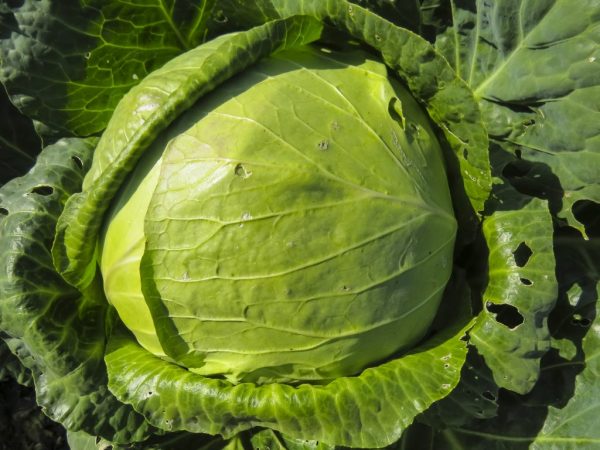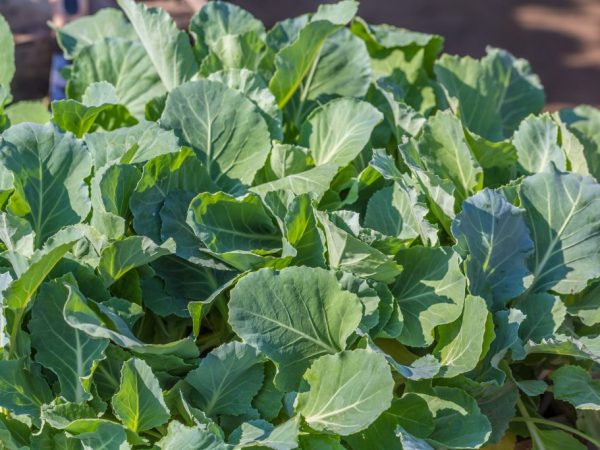Characteristics of Sibiryachka cabbage
Sibiryachka white cabbage is a mid-season variety that is resistant to low temperatures. Ideal for growing in northern regions.

Characteristics of Sibiryachka cabbage
Characteristics of the variety
According to the description, the ripening period is 125 - 140 days (from the appearance of the first shoots to harvest). The yield per m2 is 11 kg, which is a fairly high figure. Stable marketable yield - 500 - 560 kg / ha. The storage period is 4 months. Resistant to cracking and long-term transportation. Contains a large amount of vitamins and nutrients.
Description of kachan
Cabbage consists of a large head of cabbage, a short outer stump and medium-sized integumentary leaves. Description of fruits:
- shape - round-flat;
- diameter: 20 - 25 cm;
- the surface is smooth;
- average weight - 4 kg;
- density - medium;
- color - pale green;
- cut color - white, with a yellow tint;
- internal stump - medium.
Description of leaves: smooth, oval, gray-green color with a slight waxy coating, slightly wavy edges, spreading rosette.
Application
Sibiryachka is a good variety of cabbage for sale, processing, fresh consumption and cooking. It is a useful and dietary product. Recommended for use in case of vitamin deficiency, atherosclerosis, high cholesterol, visual impairment, nervous disorders and burns.
Care
Sibiryachka is an unpretentious variety, does not require special care. For faster ripening of white cabbage, seedling cultivation is used. Healthy and strong seedlings are the key to a good harvest.
Growing seedlings

Seedlings need to be loosened regularly.
Seeds of mid-season varieties are sown from mid to late May. The soil for growing seedlings is chosen light and loose, for example: sod land and humus (1: 1). Various containers are used: cassettes, boxes, peat or plastic cups.
Favorable temperature 15 - 17 ° C. Water for irrigation must correspond to the room temperature. Watering young plants is necessary as needed, the soil should not be allowed to dry out. Vegetable crops benefit from regular loosening. 14 days after emergence, the cabbage is dived. Only strong plants are left.
Top dressing
When growing seedlings in closed ground, it is recommended to carry out top dressing: after the emergence of seedlings and before planting on a land plot. For this, mineral and organic fertilizers are used. Mineral - fertilizers based on nitrogen, phosphorus and potassium. Organic matter - manure, bird droppings.
Open ground transplant
After 50 - 55 days, in early to mid-July, seedlings of Sibiryachka cabbage are planted in open ground according to the scheme: 60x60 cm. Good predecessors are: pumpkin, cereals, legumes, root crops, herbs. Cabbage does not have a permanent place on the land plot.
Watering
Irrigation is carried out early in the morning or in the evening; warm, settled water, once every 3 - 5 days. During a particularly hot period, the plants are watered daily. The beds are regularly weeded, loosened and hilled. To protect the heads of cabbage from cracking, a month before the start of harvesting, watering is stopped.
Collection and storage
The first harvest begins in September. Since the cabbage variety is frost-resistant, storage in the field is possible before the arrival of the first frost. To prevent vegetables from losing their presentation, frostbite should not be allowed.
In a vegetable store or basement, you need to provide an appropriate microclimate. Optimum temperature 0 ° C. The best indicators of air humidity are 90 - 98 ° C.
Diseases and pests
Fungal diseases:
- ring spot - point decay of leaves;
- white, gray, dry rot - decay of heads of cabbage;
- mosaic - retardation of development, deformation of leaves;
- downy mildew - wilting and dying off of leaves;
- keela - stopping the growth of fruits;
- black leg - wilting seedlings.
Viral diseases cannot be treated - infected leaves or heads of cabbage are removed. To get rid of fungal diseases, plants are treated with chemical or biological preparations: Oxyhom, Abiga-Peak, etc.
Dangerous insects:
- cruciferous gall midge, flea beetle;
- caterpillar of a whitetail;
- cabbage scoop, aphid;
- thrips;
- bear;
- wireworm.
These types of pests feed on the soft tissues of the leaves and suck out the juice. If dangerous insects are detected, protective agents are used for spraying: Intovir, Knockdown, Senpai; or apply insecticide Bazudin to the soil surface.
Conclusion
Mid-season white cabbage Sibiryachka is suitable for mass cultivation and for growing at home. Good care during the development of vegetable crops and regular treatments against pests will help to harvest a high-quality and rich harvest.


